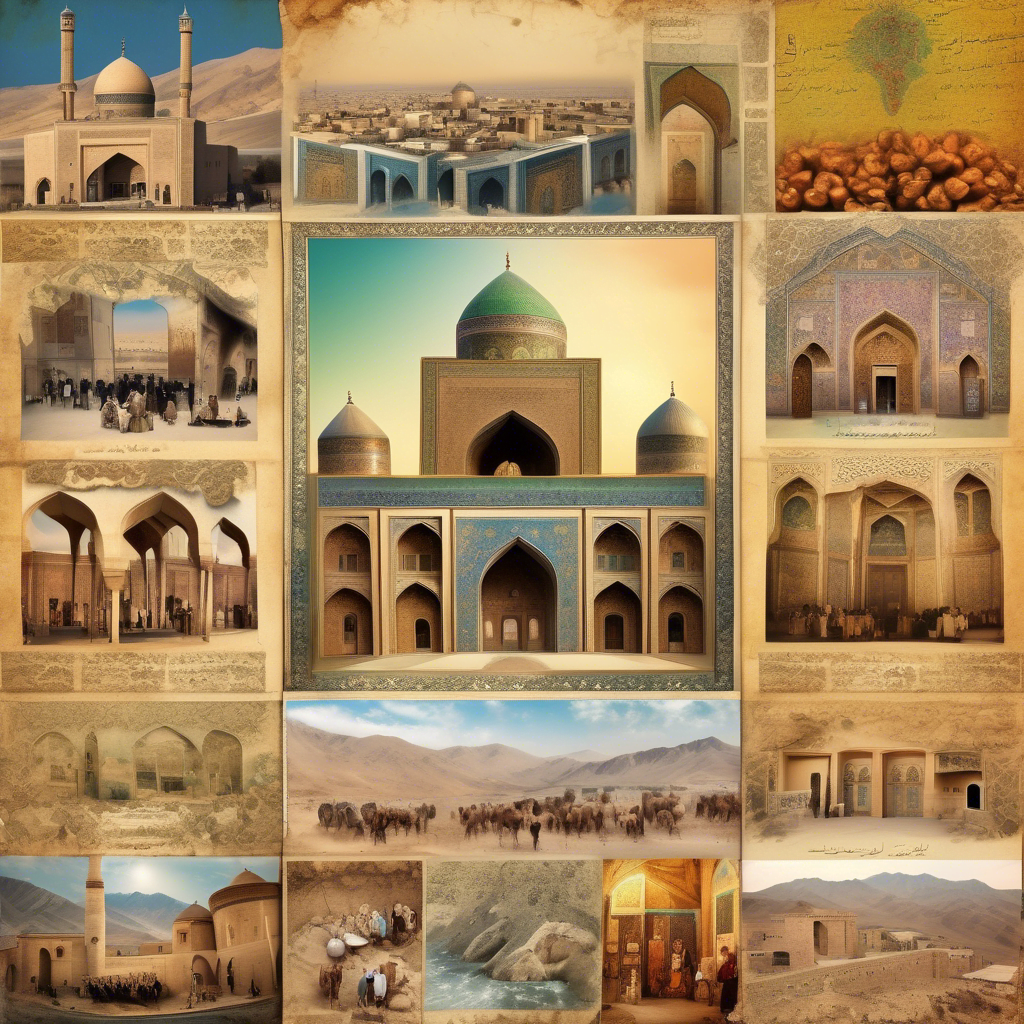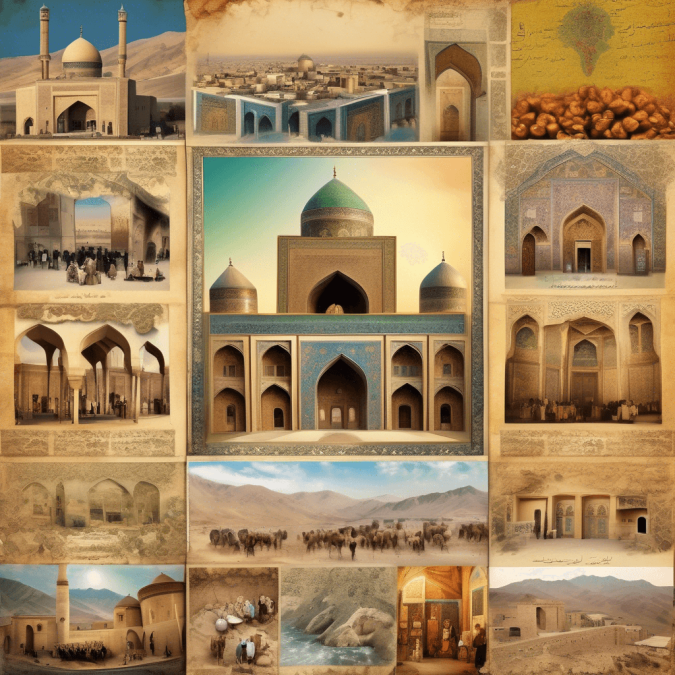
I. Introduction
A. Overview of Iran:
Iran, officially known as the Islamic Republic of Iran, is a country located in Western Asia. It is bordered by Armenia, Azerbaijan, Turkmenistan, and the Caspian Sea to the north, Afghanistan and Pakistan to the east, and Iraq and Turkey to the west. Iran is a diverse country with a rich history spanning thousands of years.
B. Importance of studying the history of Iran:
Studying the history of Iran is crucial for understanding the cultural, political, and social developments that have shaped the country and its people. Iran has been a center of civilization and culture for centuries, and its history provides valuable insights into the complexities of the region.
C. Objectives of the project:
The objectives of this project are to explore the different periods of Iranian history, from ancient civilizations to modern times, and to examine the cultural and social aspects that have defined Iran. By delving into these topics, we aim to provide a comprehensive overview of Iran’s history and its significance in the global context.
II. Ancient history of Iran (Pre-Islamic Period)
A. Overview of ancient civilizations in Iran:
Iran has been home to several ancient civilizations, including the Elamites, Medes, and Persians. These civilizations flourished in different regions of Iran and made significant contributions to art, architecture, and governance.
B. Achaemenid Empire (550-330 BCE):
The Achaemenid Empire, founded by Cyrus the Great, was one of the most powerful empires in ancient Iran. It expanded its territory to encompass a vast region, including present-day Iran, Iraq, and parts of Egypt and Greece.
C. Parthian Empire (247 BCE-224 CE):
The Parthian Empire succeeded the Seleucid Empire and ruled over Iran and neighboring territories. Known for their skilled archers and cavalry, the Parthians played a crucial role in shaping the political landscape of the region.
D. Sassanian Empire (224-651 CE):
The Sassanian Empire was the last pre-Islamic Persian empire and a major rival of the Byzantine Empire. It was known for its sophisticated administration, art, and Zoroastrian religion, which was the state religion of the empire.
III. Islamic history of Iran (Islamic Period)
A. Arab Conquest and the Umayyad Caliphate (651-750):
The Arab conquest of Iran led to the spread of Islam in the region and the establishment of the Umayyad Caliphate. The Umayyads faced resistance from local rulers but managed to consolidate their rule in Iran.
B. Abbasid Caliphate and the Golden Age of Islam (750-1258):
The Abbasid Caliphate ushered in a golden age of Islamic civilization, with advancements in science, philosophy, and literature. Iran played a significant role in this period, contributing to the intellectual and cultural achievements of the era.
C. Seljuk Empire and the Mongol Invasions (1037-1256):
The Seljuk Empire emerged as a powerful force in Iran, bringing stability and prosperity to the region. However, the Mongol invasions in the 13th century devastated Iran and led to the fall of the Abbasid Caliphate.
D. Safavid Empire and the rise of Shi’a Islam (1501-1736):
The Safavid Empire established Shi’a Islam as the state religion of Iran and promoted a distinct Iranian identity. The Safavids were known for their artistic and architectural achievements, which continue to influence Iranian culture.
E. Qajar Dynasty and the decline of Iran’s power (1789-1925):
The Qajar Dynasty marked a period of decline for Iran, as the country faced internal strife and external pressures from European powers. The Qajars struggled to maintain control over Iran, leading to a weakening of the central government.
IV. Modern history of Iran (20th Century to Present)
A. Pahlavi Dynasty and Reza Shah (1925-1941):
The Pahlavi Dynasty, led by Reza Shah, sought to modernize Iran and reduce foreign influence. Reza Shah implemented reforms in education, infrastructure, and the military but faced opposition from traditionalists and religious leaders.
B. Mohammad Reza Shah and the Iranian Revolution (1941-1979):
Mohammad Reza Shah, the son of Reza Shah, continued the modernization efforts but faced growing discontent among the Iranian people. The Iranian Revolution of 1979 led to the overthrow of the Pahlavi regime and the establishment of an Islamic Republic.
C. Islamic Republic of Iran and the Iran-Iraq War (1979-present):
The Islamic Republic of Iran, led by Ayatollah Khomeini, implemented Islamic laws and policies, transforming Iran into a theocratic state. The Iran-Iraq War (1980-1988) had a profound impact on Iran, shaping its domestic and foreign policies.
D. Challenges and developments in contemporary Iran:
Contemporary Iran faces various challenges, including economic sanctions, political unrest, and human rights issues. Despite these challenges, Iran has made advancements in technology, science, and culture, showcasing the resilience and creativity of its people.
V. Cultural and Social Aspects of Iranian History
A. Persian language and literature:
Persian language and literature have played a significant role in shaping Iranian identity and culture. Persian poets such as Rumi and Hafez are celebrated worldwide for their profound works, reflecting the beauty and complexity of the Persian language.
B. Art and architecture in Iran:
Iran is renowned for its rich artistic heritage, encompassing architecture, calligraphy, miniature painting, and handicrafts. Persian architecture, with its intricate tile work and domed structures, reflects the artistic sophistication of Iranian craftsmen.
C. Religion and society in Iran:
Religion, particularly Shi’a Islam, has been a central aspect of Iranian society throughout history. The role of religion in shaping social norms, traditions, and governance has influenced the cultural fabric of Iran and continues to play a significant role in the lives of Iranians.
VI. Conclusion
A. Summary of key points:
The history of Iran is a complex tapestry of ancient civilizations, empires, and modern transformations that have shaped the country’s identity and trajectory. Understanding Iran’s history provides valuable insights into the cultural, political, and social dynamics of the region.
B. Significance of understanding the history of Iran:
Studying the history of Iran is essential for appreciating the resilience, creativity, and diversity of its people. It offers a lens through which to understand the challenges and triumphs of a nation that has navigated through centuries of change and transformation.
C. Recommendations for further study:
For those interested in delving deeper into the history of Iran, exploring primary sources, scholarly articles, and visiting historical sites in Iran can provide a more comprehensive understanding of the country’s past and present.
VII. References
A. Books:
1. “A History of Iran: Empire of the Mind” by Michael Axworthy
2. “Iran: A Modern History” by Abbas Amanat
3. “Persian Fire: The First World Empire and the Battle for the West” by Tom Holland
4. “Iran: Empire of the Mind: A History from Zoroaster to the Present Day” by Michael Axworthy
5. “The Fall of the Shah” by Fereydoun Hoveyda
B. Articles:
1. “The Evolution of Iranian Identity in the 20th Century” – Journal of Iranian Studies
2. “Religion and Politics in Iran: From the Qajars to the Islamic Republic” – Middle East Journal
3. “Cultural Revival and National Identity in Contemporary Iran” – Iranian Studies
4. “Iran’s Foreign Policy in the Modern Era” – Foreign Affairs
5. “The Impact of the Iran-Iraq War on Iranian Society” – Middle East Report
C. Websites:
1. [Iran Chamber Society](https://www.iranchamber.com)
2. [Encyclopaedia Iranica](http://www.iranicaonline.org)
3. [National Museum of Iran](https://www.nationalmuseumofiran.ir)
4. [Tehran Times](https://www.tehrantimes.com)
5. [Islamic Republic News Agency (IRNA)](https://en.irna.ir)
D. Primary sources:
1. Cyrus Cylinder – Achaemenid artifact documenting Cyrus the Great’s conquest of Babylon
2. Safavid miniature paintings – Visual representations of life in the Safavid era
3. Qajar era documents – Official decrees and correspondence from the Qajar Dynasty
4. Ayatollah Khomeini’s speeches – Key addresses by the founder of the Islamic Republic of Iran
5. Iran-Iraq War archives – Historical records and testimonies from the war period
These references provide a comprehensive range of sources for further exploration and research on the history of Iran. They offer insights into the diverse aspects of Iranian history, culture, and society.
